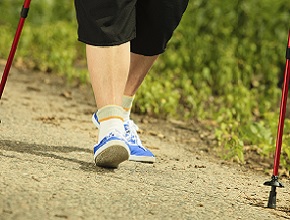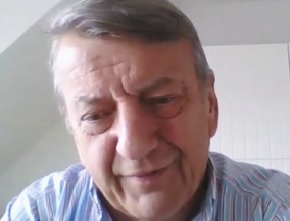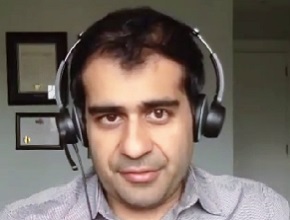Dr Sonia Anand, professor of medicine at McMaster University, joins Dr James Douketis to comment on the latest findings on high-intensity walking exercise in PAD.
For a Publications of the Week article discussing the role of high-intensity walking in PAD, click here.
James Douketis, MD: Hello everyone and welcome to another edition of the McMaster Textbook of [Internal] Medicine Publications of the Week. This week we are really honored to have one of the most distinguished faculty [members] from McMaster University—Dr Sonia Anand. Among her many titles, she is a professor of medicine at McMaster University, holds a Tier 1 Canada [Research] Chair in Ethnic Diversity and Cardiovascular Disease, and is also the Heart Stroke Foundation/Michael G. DeGroote Chair in [Population] Health Research. I could go on and on, but we only have a few minutes. So, welcome, Sonia, and it’s a pleasure to have you.
Sonia Anand, MD, PhD: It’s always a pleasure to chat with you, Jim, and I’m happy to be here.
James Douketis: Today we’re going to be talking about a paper by Dr McDermott and colleagues, entitled “Effect of Low-Intensity vs High-Intensity Home-Based Walking Exercise on Walk Distance in Patients with Peripheral Arterial Disease: The LITE Randomized Clinical Trial” (doi: 10.1001/jama.2021.2536.) that was published in JAMA earlier this year. Sonia, let me just start off by asking you… Physical exercise is an important component of the management of patients with peripheral arterial disease (PAD), but where do you see this fitting into the multidisciplinary therapeutic management of patients with PAD? I did mention that you, of course, are a clinician and one of your areas of expertise is, in fact, the management of patients with cardiovascular and, in particular, peripheral arterial disease.
Sonia Anand: That’s right. I would just start off by saying that [the] walking program is an essential component of the management of patients with PAD, specifically amongst those who have intermittent claudication, which, as you know, would be pain in their legs or heaviness with walking that’s relieved by rest. Oftentimes it’s that symptom that leads a patient into a clinician’s office and it’s often the first time that PAD is thought of. And when we see patients with those symptoms, we do some diagnostics and if we confirm [that] they have PAD, almost a foundational component of their management is 2-fold: One is, if they’re smokers, to work on smoking cessation, and the second is to get them walking. We can see incredible results of patients who maybe could walk 100 m and then get discomfort and stop [but are] increasing that [distance], often doubling it, if they take on a walking program. So, it’s an essential component of PAD management.
James Douketis: Now, let’s go on to talk a little bit about the trial itself. This trial compared different intensities of exercise, with a kind of control group of no exercise, and I think the results are interesting. Are you surprised by the results? And what do you think are the key strengths and maybe the limitations of this trial?
Sonia Anand: Thanks. First of all, the author, the first author, Mary McDermott, is like the maven in the field of exercise and claudication. So, she’s produced a high-quality series of trials. We start off with supervised exercise, [which] has always been the gold standard walking program for PAD patients, and that meant that patients had to come into a hospital or clinic setting and exercise under supervision. That is very effective, but it’s not a practical solution for all of the millions of patients with PAD. So, then, her next series of trials shifted to home-based exercise, which is also effective and especially so if there’s a coach calling in to make sure [that] the patient is doing the right type of walking. So, the LITE trial is kind of the next in that series that is saying like… It’s just saying, is “Go out and walk” enough or does intensity matter? And I think that, again, it’s a very well done trial, as Dr McDermott normally conducts, and—what was really important—my takeaway is that the high-intensity exercise is the effective form of exercise. [As to] low-intensity exercise, where you’re just going out casually walking, we cannot expect that it will improve walking distance in a PAD patient. For me it’s important because the type of recommendation that I’ll give to my patients will be more specific—around… it’s high-intensity walking that makes the difference, not just any walking.
James Douketis: Thank you. That’s very helpful and I think we’re seeing that playing out in other clinical domains or even in people who are just trying to embark on activity programs as a preventative intervention. I think this study is perhaps aligned with that. My last question is, you deal a lot with patients who have PAD and I think it’s safe to say that this is a challenging patient population. Are there some clinical pearls or any advice that you can share with us from your experience as a clinician that might help us to be, you know, better informed about managing these patients? Whether we’re talking about lifestyle issues, antithrombotic management, or management of comorbidities… Any thoughts about that?
Sonia Anand: Sure. Thankfully, in PAD, now we have a lot of evidence that can help guide our recommendations on the medical therapy side, with great randomized trial data. We didn’t have that before. That’s an important advance. The second part is that foundational advice around smoking and exercise. And I think, to your point, oftentimes PAD patients are from lower socioeconomic backgrounds. They may not have the means that maybe our typical coronary artery disease patient [has], so our directions with respect to adherence to medications, affording medications, and sticking to lifestyle advice—it’s even more a challenge with our PAD population. I think… What I’ve observed over the years is that the therapeutic relationship you can form with your patient, that kind of belief of “connection before direction” is really important here. So, kind of meeting patients at their level, not using shaming tactics like “Oh, you didn’t quit smoking, you’re going to pay for it.” And really continue to reinforce these healthy lifestyle messages. For example, if I have a patient who falls off their walking program, rather than [to] say [something] like “You know, you’re going to end up in the hospital for another surgery if you don’t walk,” I’ll just say [something] like “Tell me what’s going on? Oh, you had some stressful times. Well, we treat this as a lifelong challenge. You had a setback, but hopefully you can get back to walking.” That’s been my approach and I find that patients… If we keep bringing them back into clinic—even though, as doctors, we may feel like “I’ve told them 20 times to walk and not to smoke and they haven’t made the changes”—showing that you care and understand where they’re coming from does seem to make a difference. I’ve had pretty good results just with that kind of very tightly run clinic setting. People show up for appointments, they call in for advice, and I think it does bring about a greater lifestyle change.
James Douketis: It’s so refreshing to hear that. You know, I think, as internists, we want to practice holistic medicine and we want to be a partner with our client or patient and I think this is no [less] evident in the area of PAD. Sonia, thank you very much. This is a pleasure to have you and we look forward to your work in this and other areas and thank you for sharing your insights with us today.
Sonia Anand: My absolute pleasure, Jim. You know I’m always happy to talk about PAD at length. See you soon.
James Douketis: Thank you very much and thank you all for listening in today.
 English
English
 Español
Español
 українська
українська











